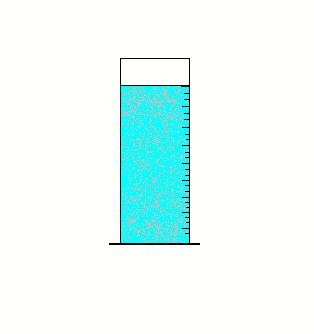Abstract
Contents
- Introduction
- 1. Purpose and objectives of the study
- 2. Justification themes and brief analysis of the issue
- 2.1. General information about the flocculant
- 2.2.Application of flocculants in the enrichment process minerals
- 3.The advantage of flocculants
- 3.1 Study of circulating water clarification process
- Conclusion
- References
Introduction
Nature protection from pollution is an urgent problem of our time, which in our country paid much attention.In this context, the problem of natural and waste water treatment is particularly important, since it is closely linked to the protection of water resources. Most methods of purification of natural and industrial waste waters, as well as ways of dewatering and compaction of different types based on the use of reagents.
In the past 20 years as a reagent becoming increasingly common water-soluble macromolecular substances - flocculants. Their use can improve the quality of treatment, increase productivity, water treatment plants, and some technological methods, such as centrifugation, generally can not be done without the use of flocculants[4].
Flocculants - is water-soluble high molecular weight compounds, which, when administered in disperse systems are adsorbed or chemically bound to the surface of the dispersed phase and combine particles in agglomerates (floccules), contributing to their rapid sedimentation. The history of high-molecular materials for purification of liquids from suspended impurities goes back to ancient times. Thus, even in 2000 BC India draw some plants containing natural polymers used for water purification, and in Ancient Greece natural polymer - egg white was used to lighten the wine. In XVIII-XIX centuries, natural polymers - gelatin and starch were used to clean fruit juices. Despite such a long history, the application of flocculation in industrial processes began in the period between the 30-mi and 50-ies of XX century. Flocculants used for the treatment of mine water from the particles of coal and clay, for the isolation and dewatering slag phosphate in obtaining uranium salts, to intensify the treatment of industrial waste water. But are widely used flocculants were from the mid 50's by the need to clean the increasing amounts of waste water and modernization of technological processes associated with the separation of solid and liquid phases. When increased demand flocculants could no longer be satisfied with natural polymers, began the introduction of organic synthetic (derivatives of starch and cellulose) and most synthetic polymers. Among the most widely used synthetic polymers and the application has received a group of polyacrylamide flocculants (PF)[5].
Most flocculants used in the present, it is organic synthetic polymers based on polyacrylamide, having different molecular weight and charge. Flocculants used for conditioning precipitation municipal wastewater, water from precipitation, galvanoshlamov, oil sludge etc. before mechanical dewatering centrifuges, filter - presses and other equipment, as well as to intensify the treatment of polluted wastewater.
Flocculants are available in the form of a granular powder with a particle size of 0.5 to 0.8 mm, are used in the form of dilute aqueous solutions with a concentration of 0.1-0.2%. The effectiveness of the working solution of flocculant depends on the validity of a solution.
Flocculant dissolution in a setup of different types of solution with stirring paddle or propeller mixer until smooth, viscous mass that are free of clots[1].
Flocculation - the process by which the adsorption interaction of the particle contamination of water with high-molecular substances (flocculants). During the interaction with the flocculant particles in the purified waste water, there is a process of flocculation to form aggregates (flakes, complexes), with three-dimensional structure. The mechanism of action of flocculants consists of three physical - chemical processes: adsorption of molecules on the surface of colloidal flocculation of particles, the formation of a network structure and adhesion molecules flocculent colloidal particles due to van der Waals forcesThe use of synthetic flocculants ensure high cleaning efficiency slurry water to produce clean water for technological needs of the plant, and sludge thickening. Under the action of flocculants between colloidal particles are formed three-dimensional structures capable of more rapid and complete separation of the liquid phase.





